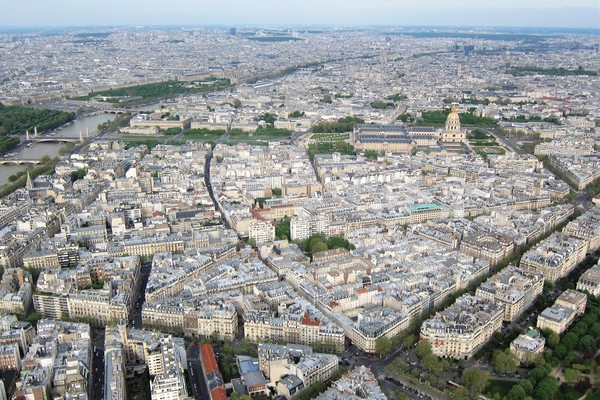Why 15-minute cities should become the standard
IMAGINE AN urban environment where every necessity of life—food, workplaces, schools, hospitals, entertainment, exercise, and more—is within a 15-minute commuting distance. That is the 15-minute city. Many cities are already well equipped to transform into this new urban model and those that require more substantial changes need only to take small steps at a time. All cities with the means should strive towards the 15-minute city ideal.

What is a 15-minute city?
The 15-minute city is an urban theory with the intention to increase the environmental sustainability and quality of life in cities. Developed by urbanist Carlos Moreno in 2016, the theory advocates for cities to transition away from high-emission transport and create self-sustainable neighborhoods. It encourages “a decentralized city” that “shift[s] away from private vehicles[1].” In its most ideal form this means people walking or biking everywhere—to work, school, food, and fun. Additionally, this model supports the implementation of more public spaces such as parks to encourage community building while simultaneously decreasing carbon footprint.
The path to a 15-minute city
Many cities are actively on their way to achieving the model, and Paris is at the center of the movement. Not only is it Moreno’s home base, but back in 2020, Paris’ Mayor Anne Hidalgo ran her campaign on the goal of turning Paris into a 15-minute city. Since then, pedestrian and bike lanes have increased and many driving streets have been closed[2]. Whether Paris can truly be proclaimed as a 15-minute city is uncertain, but they are certainly en route.
While Paris is a good example of reworking a city, 15-minute cities may also be constructed from scratch. In 2019, the Hyundai Development Company commissioned UNStudio, a Dutch architecture firm, to design a ten-minute high-tech neighborhood in Seoul[3]. This clean-energy powered neighborhood will be built from the ground up, with plans for high rises, parks, and other public spaces connected by walkways. While likely more expensive than a rework, starting from scratch could be a simpler approach for cities, as there are no pre-established systems in place to disrupt. Imagining cities like Paris, Seoul, Tokyo, or New York taking steps to become 15-minute cities is easy; however, other cities have a hazier path to transformation.
Removing highways is the first step in cities with insufficient public transportation like Los Angeles. Although timely and costly, many urban planners agree that the benefits of reconnecting neighborhoods and deprioritizing cars outweigh worries over increased traffic[4].
Disadvantages
Time and money—barriers to many things, including 15-minute cities. Paris’ reconstruction of the Caserne des Minimes—a government office—into apartments, offices, a daycare center, a clinic, and other facilities cost €12.3 million alone[5]. This, along with more bike lanes and green spaces, is just the first two years of Paris’ plan, and the expense is already lofty. It would be narrow-minded to assume that all cities can afford to prioritize urban planning. Not when many low-income countries have more vital issues to attend to, or simply lack the funds. However, for those high-income countries with the means, the advantages far outweigh the price.
Benefits
Not only would this urban model assist in lowering carbon emissions, but it would increase the mental and physical health of residents. A 15-minute city inherently encourages people to walk and bike more, and in an increasingly sedentary society, the health benefits to individuals would be immense. Additionally, with the shortened commuting times, people would have more leisure time. Thus, stress levels would lower, people could pick up new hobbies, or spend more time with loved ones. Likewise, the implementation of more public spaces and the increased neighborly interaction would foster community building that cities presently lack. Overall, the well-being of citizens—especially regarding mental health—and quality of life would improve significantly.
The advantages of 15-minute cities are undeniable and cities worldwide should move in such a direction. The sooner we begin, the better chance there is to combat climate change. The 15-minute city creates urban environments where the well-being of individuals is prioritized above all else—the perfect reason to reconfigure our cities and ditch our cars.
[1] The OBEL AWARD
[2] World Resources Institute
[3] CNN
[4] Arch Daily
[5] The Local France

